
Welcome to Hyperion Records, a British classical label devoted to presenting high-quality recordings of music of all styles and from all periods from the twelfth century to the twenty-first.
Hyperion offers both CDs, and downloads in a number of formats. The site is also available in several languages.
Please use the dropdown buttons to set your preferred options, or use the checkbox to accept the defaults.

| Ignacy Jan Paderewski (piano)» More |
The eight Fantasiestücke (there was originally a ninth piece, but Schumann omitted it from the collection and it was not published until 1935) do not form a unified cycle in the sense that Carnaval does. They were designed more for the drawing-room than the concert-hall, though writing to Clara Wieck on 12 February 1838 Schumann recommended individual pieces for public performance—in particular, ‘Des Abends’ and ‘Traumes Wirren’. Curiously enough, he thought ‘In der Nacht’—surely one of the very finest pieces in the series—too long for such a purpose. As for Clara, she confessed that her favourites were ‘Fabel’, ‘Des Abends’, ‘Aufschwung’, ‘Grillen’ and ‘Ende vom Lied’.
Schumann divided the Fantasiestücke into two Books, each having its own tonal centre. Three of the four pieces in Book I are in D flat major. Significantly enough, the exception—‘Aufschwung’—sets off as though it is to be in B flat minor, the closest relative among the minor keys to D flat major; and the first of its two contrasting episodes is actually in D flat. Not until the very end does the main theme at last cadence with deliberate abruptness onto the home chord of F minor.
‘Des Abends’ is among the most perfect and intimate of all Schumann’s piano miniatures. Its smooth melody is syncopated throughout (it is the left-hand accompaniment that maintains the actual beat); and when it passes to the inner voice in the second half of the opening section, it undergoes a further shift in relation to the bar-line. The pianist playing this piece finds his thumbs interlocked virtually throughout.
Following the dramatic intensity of ‘Aufschwung’, with its upward-surging melody, the question posed in ‘Warum?’ seems to be of secretive innocence. The piece is much shorter and simpler than the remaining numbers, and could almost have been designed for Kinderszenen—the collection Schumann composed immediately after completing the Fantasiestücke. The end of its second half links back to its repeat, but it does not provide a real conclusion the second time through. Instead, the circular, repetitive nature of the closing bars leaves the music hanging in mid-air, as though on a genuine question-mark.
The melodic contour of ‘Warum?’ is taken over in the opening bars of the good-natured ‘Grillen’—another piece that begins by approaching its home key obliquely. Schumann wanted it played with humour—a concept he later described (apropos his Humoreske Op 20) as being characteristically German—a happy combination, as he put it, of ‘Gemütlichkeit’ and wit.
Of the pieces in the second Book, both ‘In der Nacht’ and ‘Traumes Wirren’ unfold in a constant swirl of semiquavers—dark and intense in the former (though it has a warmer, more lyrical episode in the major), dazzlingly light in the latter. There are more cascading semiquavers in the middle section of ‘Fabel’, though for the rest this piece alternates a slow, smoothly expressive phrase (the ‘once upon a time’, perhaps, suggested by the piece’s title) and a much quicker staccato idea. The final piece makes a return to the slightly pompous Biedermeier style of ‘Grillen’, and once again the pianist is instructed to play it good-humouredly. But the coda introduces a new element of poetry into the proceedings, and the nostalgic final bars echo the opening melody in slow-motion, and as if from afar.
from notes by Misha Donat © 2005
Les huit Fantasiestücke (il y en avait neuf à l’origine, mais Schumann omit la dernière dans le recueil—elle ne fut publiée qu’en 1935) ne forment pas un cycle unifié comme Carnaval. Elles furent conçues plus pour le salon que pour la salle de concerts, même si, dans une lettre du 12 février 1838 adressée à Clara Wieck, Schumann en recommande certaines pour une interprétation publique, notamment «Des Abends» et «Traumes Wirren». Assez curieusement, il jugea «In der Nacht»—assurément l’un des fleurons de la série—trop longue dans une telle optique. Quant à Clara, elle avoua que ses morceaux préférés étaient «Fabel», «Des Abends», «Aufschwung», «Grillen» et «Ende vom Lied».
Schumann divisa les Fantasiestücke en deux livres, avec chacun un centre tonal. Trois des quatre pièces du Livre I sont en ré bémol majeur, l’exception («Aufschwung») faisant mine de partir, ce qui est assez significatif, en si bémol mineur, le relatif mineur le plus proche de ré bémol majeur; et le premier de ses deux épisodes contrastés est en réalité en ré bémol. C’est seulement à la toute fin que le thème principal cadence enfin avec une brusquerie délibérée jusqu’à l’accord mère de fa mineur.
De toutes les miniatures pour piano de Schumann, «Des Abends» est l’une des plus parfaites et des plus intimes. Sa mélodie régulière est syncopée de bout en bout (l’accompagnement à la main gauche maintient le temps réel); et lorsqu’elle passe à la voix intérieure, à la seconde moitié de la section d’ouverture, elle subit un nouveau changement par rapport à la barre de mesure. Le pianiste qui joue ce morceau a les pouces presque constamment entrelacés.
Après l’intensité dramatique d’«Aufschwung», avec sa mélodie au déferlement ascendant, la question posée par «Warum?» semble presque d’une secrète innocence. Beaucoup plus simple et plus courte que les autres pièces, elle eût presque pu faire partie des Kinderszenen, le recueil que Schumann composa juste après les Fantasiestücke. Arrivée à la fin, sa seconde moitié se répète, sans pour autant fournir de véritable conclusion. Au lieu de cela, la nature circulaire, répétitive des dernières mesures laisse la musique suspendue en plein ciel, comme sur un authentique point d’interrogation.
Le contour mélodique de «Warum?» est repris dans les premières mesures de «Grillen», pièce bon enfant qui commence, elle aussi, en approchant sa tonalité mère de manière détournée. Schumann la voulait jouée avec «Humor»—un concept qu’il décrira plus tard, à propos de ses Humoreske, op. 20 comme typiquement allemand—, un heureux mélange, selon ses propres mots, de «Gemütlichkeit» et d’humour.
Parmi les pièces du Livre II, «In der Nacht» et «Traumes Wirren» se déploient toutes deux en un constant tourbillon de doubles croches—sombres et intenses dans la première (malgré un épisode en majeur, plus chaud et plus lyrique), d’une clarté éblouissante dans la seconde. Les cascades de doubles croches sont plus nombreuses dans la section médiane de «Fabel», même si cette pièce fait, par ailleurs, alterner une phrase lente, doucement expressive (peut-être le «il était une fois» suggéré par la «fable» du titre), et une idée staccato bien plus rapide. La dernière pièce marque un retour au style Biedermeier, un rien pompeux, de «Grillen», et le pianiste doit, là encore, la jouer avec bonne humeur. Mais la coda introduit un nouvel élément de poésie dans le déroulement de la pièce, et les dernières mesures, nostalgiques, font écho à la mélodie d’ouverture au ralenti, comme de loin.
extrait des notes rédigées par Misha Donat © 2005
Français: Hypérion
Die acht Fantasiestücke (ursprünglich waren es neun, doch nahm Schumann ein Stück heraus, das dann erst 1935 veröffentlicht wurde) sind nicht so ein einheitlicher Zyklus wie etwa Carnaval. Sie waren mehr für den Salon als für den Konzertsaal gedacht, obwohl Schumann in einem Brief vom 12. Februar 1838 an Clara Wieck einzelne Stücke für öffentliche Darbietungen empfahl, insbesondere „Des Abends“ und „Traumes Wirren“. Interessanterweise fand er, dass „In der Nacht“—das doch sicherlich als eines der grossartigsten Stücke des Zyklus’ bezeichnet werden kann—für solche Vorhaben zu lang sei. Clara selbst fand „Fabel“, „Des Abends“, „Aufschwung“, „Grillen“ und „Ende vom Lied“ am besten.
Schumann teilte die Fantasiestücke in zwei Bücher ein, die jeweils ein tonales Zentrum haben. Mit der Ausnahme von „Aufschwung“ stehen alle vier Stücke des ersten Buches in Des-Dur. „Aufschwung“ fängt bedeutsamerweise so an, als stünde es in b-Moll—die mit Des-Dur am engsten verwandte Moll-Tonart; und die erste der beiden kontrastierenden Episoden steht sogar in Des-Dur. Erst am Ende kadenziert das Hauptthema mit absichtlicher Schroffheit in die Haupttonart f-Moll.
„Des Abends“ gehört zu den vollkommensten und intimsten Klavierminiaturen Schumanns überhaupt. Die weiche Melodie ist durchgehend synkopiert (der eigentliche Takt wird von der Begleitung in der linken Hand angegeben) und wenn die innere Stimme in der zweiten Hälfte des Anfangsteils erscheint, verschiebt sich die Melodie im Taktgefüge abermals. Während fast des gesamten Stücks sind die beiden Daumen des Pianisten ineinander verschränkt.
Nach der dramatischen Intensität von „Aufschwung“ mit seiner nach oben schnellenden Melodie erscheint die Frage in „Warum?“ mit nahezu geheimnisvoller Unschuld. Das Stück ist um einiges kürzer und schlichter als die restlichen Nummern und könnte fast für eine der Kinderszenen gehalten werden—jener Zyklus, den Schumann direkt nach den Fantasiestücken komponierte. Zwar wird die zweite Hälfte wiederholt, doch kommt das Stück zu keinem richtigen Ende. Stattdessen bleibt die Musik nach den umherkreisenden, sich wiederholenden Schlusstakten wie ein Fragezeichen in der Luft hängen.
Die melodischen Konturen von „Warum?“ werden in den Anfangstakten des gutmütigen „Grillen“ übernommen—ebenfalls ein Stück, das sich seiner Haupttonart zunächst nur indirekt nähert. Schumann verlangte, dass es mit Humor gespielt werden möge—ein Konzept, das er später (in Zusammenhang mit seiner Humoreske op. 20) als typisch deutsch beschrieb—in einer glücklichen Verbindung, wie er es formulierte, von „Gemütlichkeit“ und Witz.
Im zweiten Buch erscheinen sowohl „In der Nacht“ als auch „Traumes Wirren“ in einem fortlaufenden Wirbel von Sechzehntelnoten—düster und intensiv im ersteren Stück (obwohl dann eine wärmere, lyrische Dur-Episode folgt) und eher grell im Letzteren. Auch der Mittelteil von „Fabel“ hat Sechzehntel-Kaskaden, obwohl in dem Stück sonst alternierend eine langsame, weiche und expressive Phrase (möglicherweise das „Es war einmal“, das mit dem Titel angedeutet wird) und ein sehr viel schnelleres Staccato-Motiv erklingen. Das letzte Stück kehrt zu dem etwas schwülstigen Biedermeier-Stil von „Grillen“ zurück und auch hier wird der Pianist angewiesen, launig zu spielen. Mit der Coda wird jedoch ein neues, poetisches Element eingeführt und in den nostalgischen Schlusstakten hallt die Anfangsmelodie in Zeitlupe und wie aus Ferne wider.
aus dem Begleittext von Misha Donat © 2005
Deutsch: Viola Scheffel
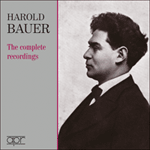 Harold Bauer - The complete recordings Harold Bauer - The complete recordings Gramophone» More Gramophone» More |
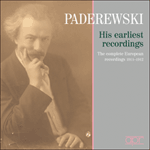 Paderewski - His earliest recordings Paderewski - His earliest recordings |
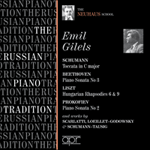 Emil Gilels - Schumann, Beethoven, Liszt & Prokofiev Emil Gilels - Schumann, Beethoven, Liszt & Prokofiev |
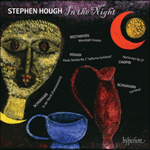 In the Night In the NightThis recital album by ‘the thinking person’s virtuoso: an extraordinary pianist’ (The New York Times) takes the listener on a journey through that most intense and absorbing of nineteenth-century obsessions, the night. Stephen Hough’s thoughtful p ...» More |
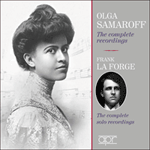 Olga Samaroff & Frank La Forge - The complete recordings Olga Samaroff & Frank La Forge - The complete recordingsOlga Samaroff and Frank La Forge were amongst the earliest pianists to record for the US Victor label, both making most of their discs in the acoustic era before 1925. Samaroff was the greater virtuoso, as can be heard in her famous recording of W ...» More |
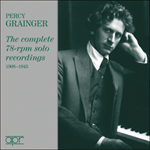 Percy Grainger - The complete 78-rpm solo recordings Percy Grainger - The complete 78-rpm solo recordings‘Here’s something a little bit special to mark the fiftieth anniversary of the death of Percy Grainger … Grainger was a charismatic pianist and a ... ‘The best of Grainger’s shellac efforts retain their vividness and communicative immediacy. Even if Grainger had never met and befriended Grieg, his i ...» More |
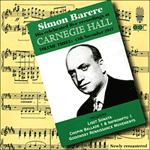 Simon Barere – His celebrated live recordings at Carnegie Hall, Vol. 3 - 11 November 1947 Simon Barere – His celebrated live recordings at Carnegie Hall, Vol. 3 - 11 November 1947 |
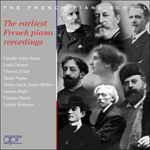 The earliest French piano recordings The earliest French piano recordingsThis set brings together some of the earliest and rarest piano recordings ever made, not just in France, but worldwide, and includes the complete solo recordings of all the pianists featured except Wurmser. The French office of the Gramophone Comp ...» More |
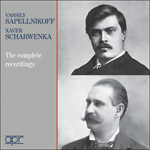 Vassily Sapellnikoff & Xaver Scharwenka - The complete recordings Vassily Sapellnikoff & Xaver Scharwenka - The complete recordingsVassily Sapellnikoff (1868–1941) and Xaver Scharwenka (1850–1924) were among the earliest generation of pianists to record, and on this ground alone it is surprising that their complete recordings have never before been transferred for modern list ...» More |
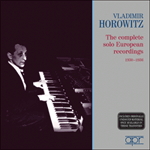 Vladimir Horowitz - The complete solo European recordings Vladimir Horowitz - The complete solo European recordings |

